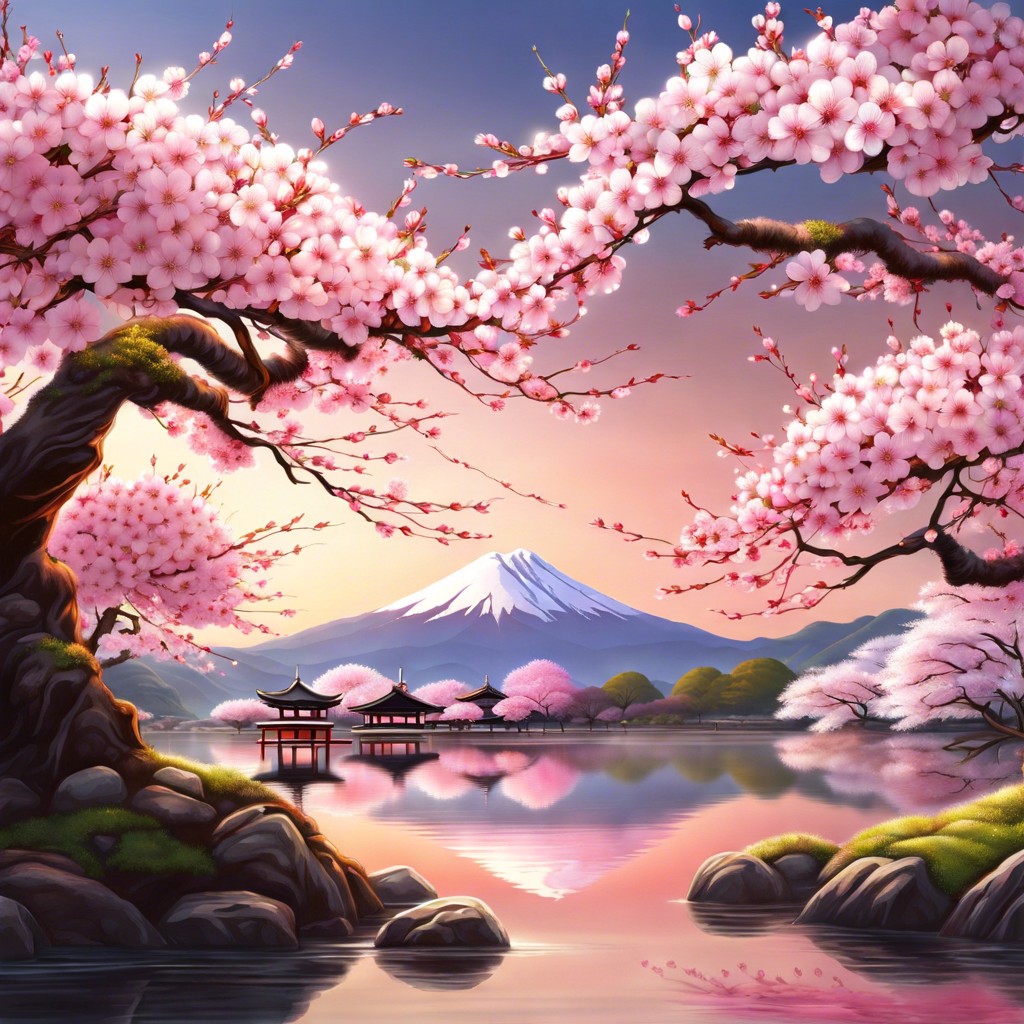Cherry blossoms symbolize the beauty of life, fleeting moments, and renewal, and this article will unravel their spiritual significance.
Cherry blossoms, or sakura, hold profound significance throughout Japanese culture and beyond. Their fleeting beauty encapsulates life’s transience, spiritual renewal, and the tender essence of love and beauty. Dive into a journey through history, symbolism, and the delicate brushstrokes of art and literature influenced by these mesmerizing blooms.
Key takeaways:
- Cherry blossoms symbolize transience and beauty.
- Japanese culture cherishes cherry blossoms for their significance.
- Cherry blossoms remind us to embrace life’s impermanence.
- They symbolize renewal, personal growth, and spiritual cleansing.
- Cherry blossoms reflect love, beauty, and fleeting moments.
Symbolism in Japanese Culture

In Japan, cherry blossoms, or sakura, carry deep cultural significance.
Every spring, the blossoming of sakura marks a time of reflection and appreciation. They symbolize the fleeting nature of life, known as mono no aware, which is a recognition of the beauty in transience.
This period also coincides with hanami, a tradition where people gather under cherry trees to celebrate and enjoy the flowers. Hanami fosters community and reconnects individuals with nature.
Samurai historically associated sakura with the warrior ethos, as their short-lived blooms mirrored the samurai’s brief, but honorable life on the battlefield.
Cherry blossoms also appear frequently in Japanese art, representing beauty and the impermanence of life. Architecture and textiles often incorporate sakura motifs, reinforcing their cultural presence.
Metaphors for Life’s Transience
Cherry blossoms symbolize the fleeting nature of life. Their brief bloom period, typically only a couple of weeks, mirrors human existence—beautiful yet short-lived.
They remind us to cherish every moment. Each delicate petal falling to the ground signals a graceful acceptance of life’s impermanence.
In Japanese culture, this is closely linked to the concept of mono no aware, an awareness and appreciation of the ephemeral.
Observing the cherry blossoms can be a meditative experience, encouraging mindfulness and presence.
Their transient beauty pushes us to value connections and experiences over material pursuits.
Spiritual Renewal and Rebirth
Cherry blossoms symbolize a fresh start and new beginnings. As these delicate flowers bloom in early spring, they remind us of the cycle of life, death, and rebirth. This transition aligns with personal growth, shedding old layers to embrace new opportunities.
In spiritual practices, the cherry blossom represents the cleansing of the soul. It encourages letting go of past burdens and embracing a renewed spirit. The fleeting beauty of the blossoms also teaches mindfulness, urging us to appreciate the present moment.
The renewal aspect is often linked to meditation, where the focus is on inner transformation and spiritual awakening. By observing the transient nature of cherry blossoms, individuals find inspiration to cultivate their spirituality and seek inner peace.
Connections to Love and Beauty
Cherry blossoms have long been associated with love and beauty, particularly in Japanese culture. The delicate and fleeting nature of the blossoms beautifully mirrors the transient nature of both love and beauty in our lives. They remind us to appreciate these moments while they last, emphasizing the importance of living in the present.
Many romantic traditions in Japan, such as Hanami, involve couples enjoying the beauty of cherry blossoms together, enhancing their bond. This practice symbolizes the blossoming of their relationship and the delicate balance required to maintain it.
Art and poetry frequently use cherry blossoms to convey the beauty of love and the heartbreak of its impermanence. The fleeting bloom period of the flowers serves as a poignant metaphor for the intensity and brevity of romantic experiences.
In essence, cherry blossoms encapsulate the ethereal essence of both love and beauty, urging us to cherish these fragile, yet profoundly beautiful, moments in life.
Influence On Art and Literature
From ancient poetry to contemporary paintings, cherry blossoms have left an indelible mark on art and literature. They often symbolize the fleeting nature of life, making them a poignant subject for poets and painters alike.
Haiku poets frequently use cherry blossoms to evoke emotions of impermanence and beauty. Their brief bloom mirrors the transience captured in the short, powerful verses.
In ukiyo-e woodblock prints, scenes of cherry blossoms often highlight seasonal changes, focusing on the tension between beauty and ephemerality.
Modern literature also embraces this symbol. Novels and movies use cherry blossoms to convey themes of renewal and new beginnings, reflecting their powerful cultural and spiritual resonance.
Artists find inspiration in the delicate petals, using them as metaphors for life’s delicate balance between beauty and brevity. These creative expressions continue to captivate audiences worldwide.





